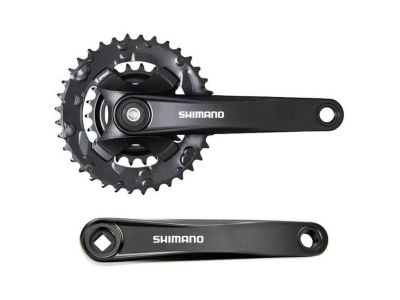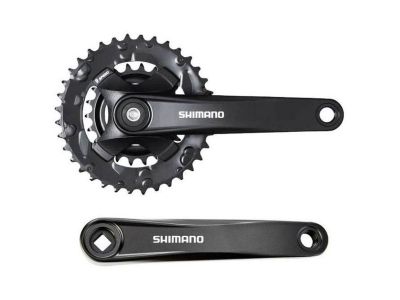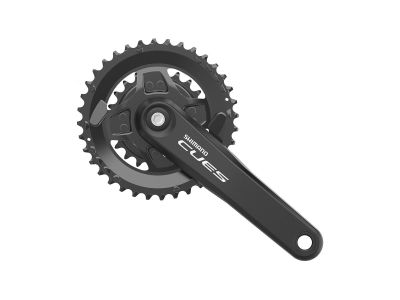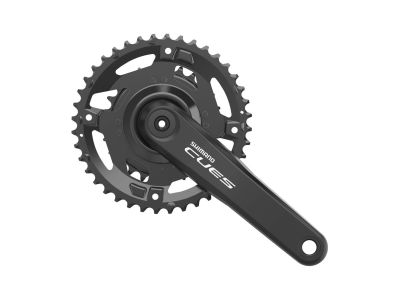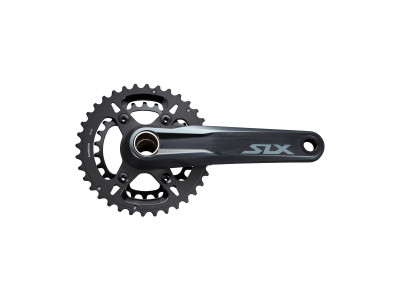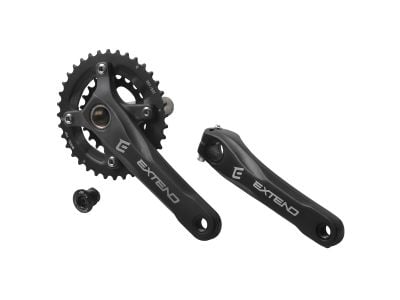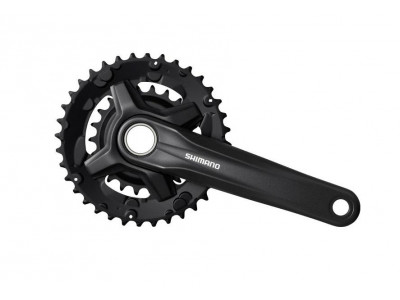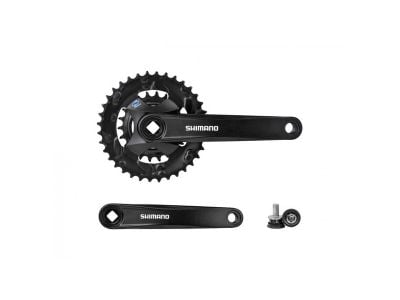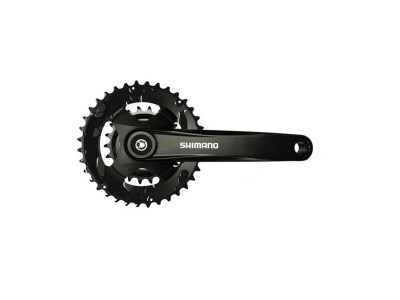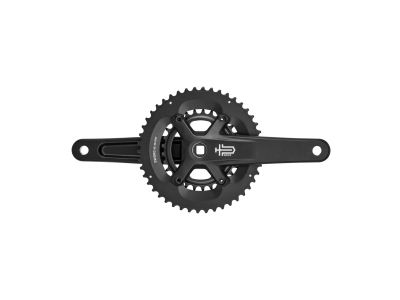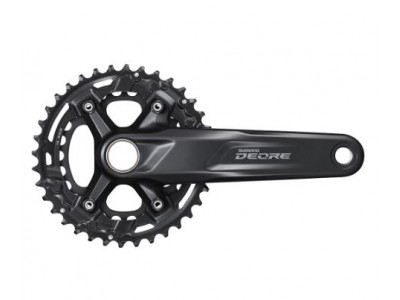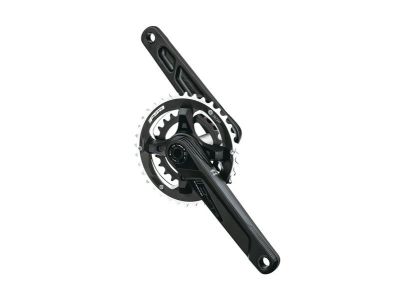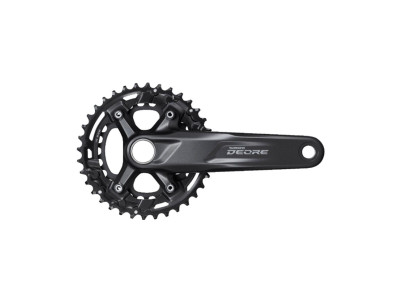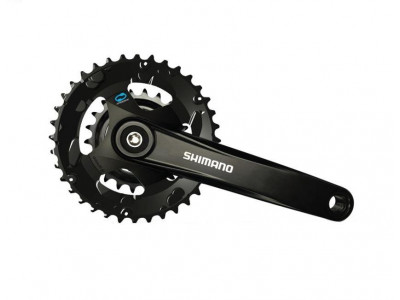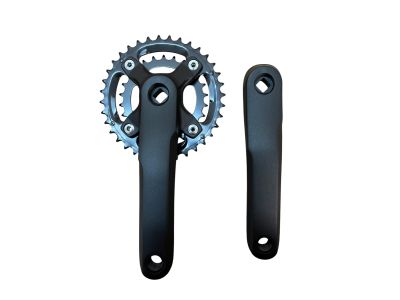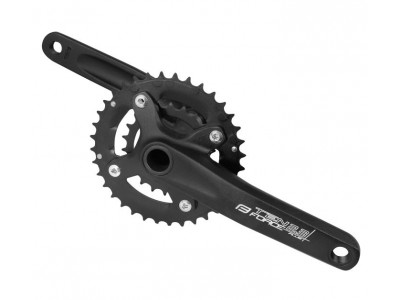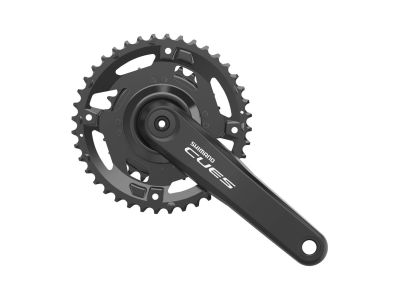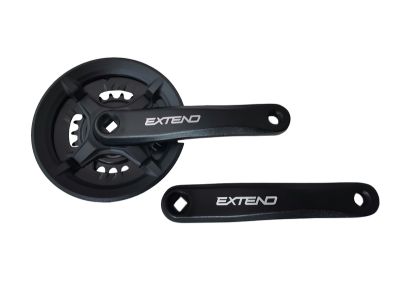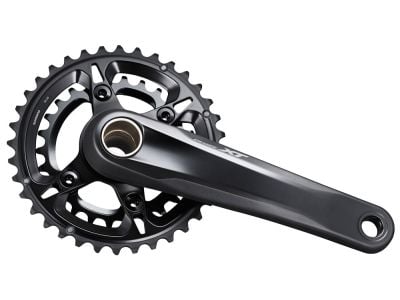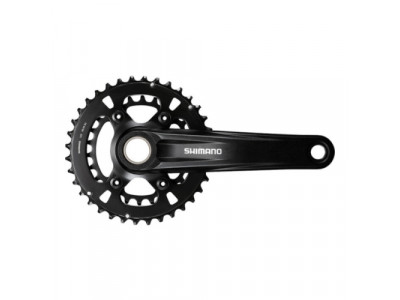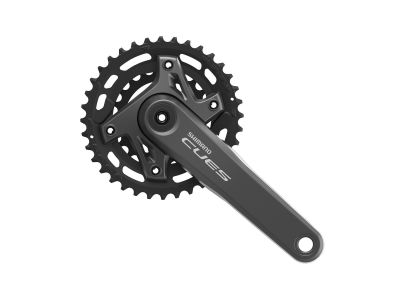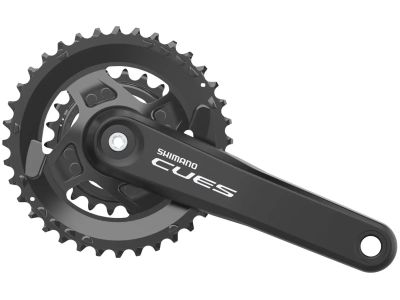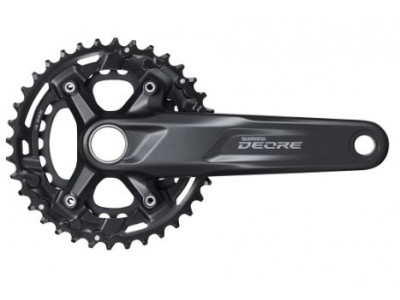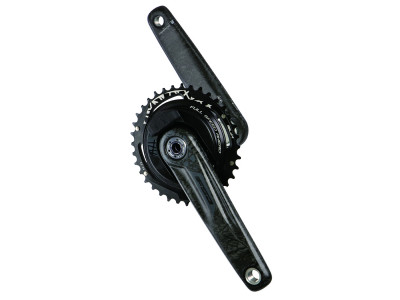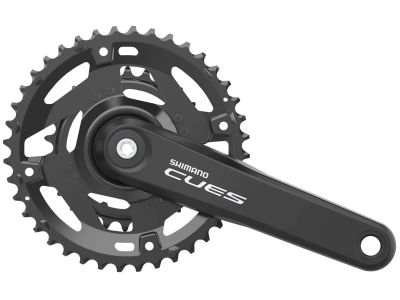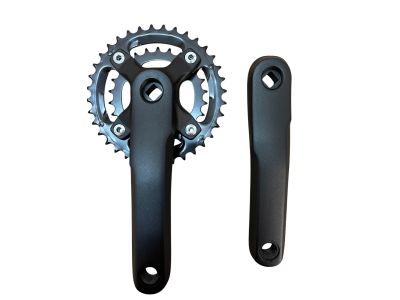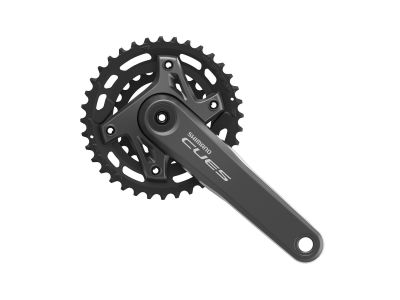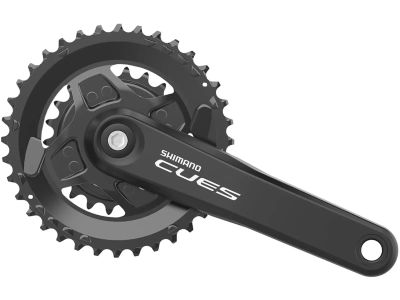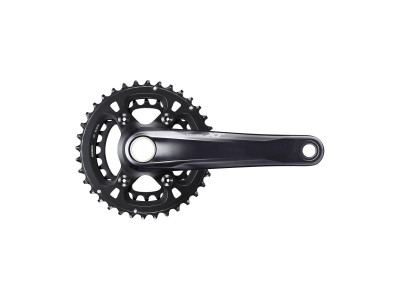Double chainrings have been popular among mountain bikers for many years. Compared to single chainrings, they offer a wider range and provide more gears for different riding conditions.
Dual chainrings offer a good balance between climbing gears and gears designed for high speeds on flat surfaces, making them suitable for riders, who prefer a wider range of transfers over simplicity. Their disadvantage is the need to use a
front derailleur and their higher weight.
How to choose suitable cranks with dual chainring?
When choosing a two-speed mountain bike crankset, consider the following factors:
- Gear ratios: Determine the gear ratios you need based on the terrain you ride in and your driving style. Think about the range of gears you require for climbs, flats, and descents. A smaller chainring will provide easier gears on climbs, while a larger chainring will offer higher speed options on flats and downhills.
- Sprocket sizes: Choose the appropriate sprocket sizes based on the required gear ratios. Common sizes of two-speed MTB chainrings range from 24T to 38T for the smaller chainring and from 36T to 50T for the larger chainring.
- Compatibility: Ensure compatibility with your bike frame, bottom bracket type and front derailleur. Different bikes use different bottom brackets standards, such as threaded (e.g. BSA or English) or pressed (e.g. PF30 or BB92). Check whether the cranks you have chosen are compatible with a specific type of bottom bracket.
- Chain line: The bike chain line refers to the alignment of the bike chain with the drivetrain components. Specifically, it is the distance between the axis of the bicycle frame and the axis of the chainring at the front and the axis of the cassette at the back. For most MTB bikes, the chain distance from the frame axis is around 50 mm, but you can find the recommended chain distance in the specifications of your bike.
- Material and durability: Consider the materials used in the construction of the cranks. Common options include aluminium, carbon fibre, or a combination of both. Aluminium cranks are generally more affordable, while carbon cranks offer less weight but are more expensive. Pick a crankset that balances durability, weight, and your budget.
- Brand and reviews: Explore the offer from renowned brands, known for producing quality cranks. Read reviews from other riders to get an overview of the performance, durability, and reliability of different types. This information can help you make a decision.
- Budget: Determine your budget and pick cranks that provide the desired features within your price range. Higher-end cranksets often offer lighter weight, better stiffness, and more power, but can be more expensive.
What are the main advantages of using double-drive cranks?
The benefits of using a two-speed crankset include a wider range of gears, better shifting performance, versatility for different terrains, balanced gear ratios and compatibility with most modern mountain bike frames and drivetrains.
Can I convert my existing single- or triple chainring cranks to a dual chainring?
In some cases, it is possible to convert the existing drive to a drive with cranks with dual chainring. However, it may require additional components, such as a new front derailleur, or a different bottom bracket.
